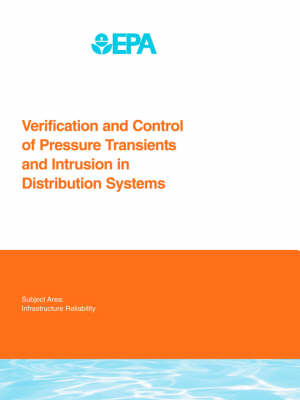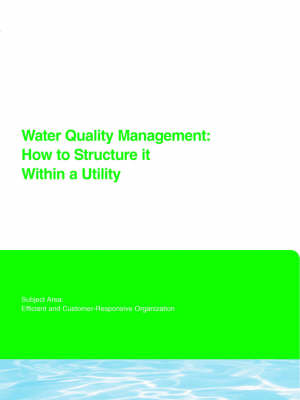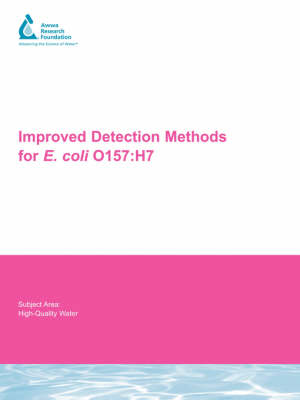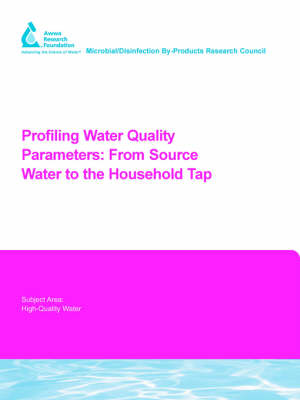Water Research Foundation Report
5 total works
Source Water Protection for Concentrated Animal Feeding Operations
by R. Gullick, R Brown, and D. Cornwell
Published 31 July 2007
The objective of the research was to compile information and guidance to help drinking water utilities better understand (1) the basics of animal feeding operations and related agricultural activities, (2) the characteristics and quantity of the wastes produced, (3) the fate and transport of these contaminants in the environment, (4) potential contaminant impacts on source water quality, (5) and strategies that water utilities and CAFOs may use to control and monitor the release of these contaminants to drinking water sources.
Concentrated animal feeding operations (CAFOs) for beef cattle, dairy cattle, swine, poultry, and other species are located throughout the United States to meet the demand for meat and other animal-related products. The growing trend toward concentrating increasing numbers of animals into smaller areas has magnified waste handling difficulties and increased the potential for releases of manure, excess animal feed, or by-products into the environment. Drinking water source quality may be adversely affected by contaminants originating from these facilities. Water utilities are encouraged to identify the location and characteristics of CAFOs and other smaller animal feeding operations (AFOs) in their source water areas, determine if these facilities pose a risk to source water quality, develop a prioritized plan of action for addressing key issues, and implement the components of the protection plan.
This research provides background information and guidance to help utilities assess potential impacts of AFOs and CAFOs on their source water quality, and for developing appropriate, successful, and affordable courses of action in cases where AFO and CAFO wastes are considered to be of concern.
Concentrated animal feeding operations (CAFOs) for beef cattle, dairy cattle, swine, poultry, and other species are located throughout the United States to meet the demand for meat and other animal-related products. The growing trend toward concentrating increasing numbers of animals into smaller areas has magnified waste handling difficulties and increased the potential for releases of manure, excess animal feed, or by-products into the environment. Drinking water source quality may be adversely affected by contaminants originating from these facilities. Water utilities are encouraged to identify the location and characteristics of CAFOs and other smaller animal feeding operations (AFOs) in their source water areas, determine if these facilities pose a risk to source water quality, develop a prioritized plan of action for addressing key issues, and implement the components of the protection plan.
This research provides background information and guidance to help utilities assess potential impacts of AFOs and CAFOs on their source water quality, and for developing appropriate, successful, and affordable courses of action in cases where AFO and CAFO wastes are considered to be of concern.
Verification and Control of Pressure Transients and Intrusion in Distribution Systems
by Melinda J. Friedman, Mike Britton, L. Radder, S. Harrison, D. Howie, Glen Boyd, H Wang, R. Gullick, M. W. LeChevallier, and D Wood
Published 1 February 2005
Sudden valve closures can create rapid changes in water velocity that result in transient pressure conditions. Pressure transients can travel throughout a distribution system and cause low or negative pressures. Contamination may occur if a leak or air-vacuum valve is submerged and a low pressure wave passes through the pipeline. Pressure transients may be initiated by regular water distribution system operations. Therefore, pressure transients may occur frequently in certain water distribution systems. The objectives of this project were to verify that low and negative pressure transients actually occur in real distribution systems (not just within large transmission mains) and that they can cause contaminants external to the pipe to be intruded into a drinking water main through a leak or orifice. The research strategy for this project was divided into five primary tasks: (1) an expert panel workshop; (2) design and construction of a pilot-scale test rig and associated testing to measure intrusion volumes under various operating conditions; (3) field studies including pressure monitoring in seven full-scale distribution systems plus comparison of mechanical pen and chart recorders, data collected by SCADA systems, and high-speed data loggers; (4) evaluation of the capabilities of full-scale hydraulic surge modeling; and (5) development of a surge control program and control strategy guidelines.
Water quality management has many dimensions including operations support, laboratory management, project planning, data management, research, technological applications, staff development, customer satisfaction, budget management, technological advancements and regulatory compliance. Water utilities have developed pragmatic organizational and strategic methods to manage these responsibilities, and their water quality managers have acquired substantial related expertise. This experience can be used by other water utilities seeking to improve their water quality management performance. Originally published by AwwaRF for its subscribers in 2004.
Improved Detection Methods for E. coli 0157
by Z. Bukhari, J. Weihe, and M. W. LeChevallier
Published 1 March 2006
The presence of coliform bacteria in water is widely accepted as an indication of contamination that is potentially of fecal origin. The E. coli strain O157:H7 is particularly virulent and is characterized by its low infectious dose and severity of illness. For example, E. coli O157:H7 was determined to be the causative agent for a 1989 waterborne outbreak in Cabool, Missouri that resulted in 243 cases of illness and four deaths. Another widely publicized outbreak occurred in Walkerton, Canada in 2000 where 21 deaths were reported. Traditional E. coli O157:H7 detection procedures are tedious, time consuming, and, most importantly, lack the specificity for accurate determination in a timely manner to allow water utilities to employ contingency measures where contamination with this pathogen exists. The goal of this research was to develop a rapid ( 8 hours) analytical method to detect the presence of E. coli O157:H7 in raw water sources and treated drinking water.
The primary objective of the project was to characterize raw water, treatment plant, distribution, and household tap water quality with respect to microbes, water quality indictors, and physicochemical parameters in Davenport, Iowa. The goal was to provide a context for interpreting the public health data generated by the epidemiology study. In response to the 1996 amendments to the Safe Drinking Water Act requirements, the U.S. Centers for Disease Control and Prevention (CDC) and the U.S. Environmental Protection Agency (USEPA) formulated a series of epidemiology studies to determine the occurrence of waterborne disease in the United States. The Iowa-American Water Company, Davenport district, was selected because it best satisfied all of the study criteria. Detailed analyses were conducted on raw, treated plant effluent, distribution system, and household tap and treatment device water samples. The findings of the separately funded epidemiology study will have a tremendous impact on the perception and regulation of drinking water. This study demonstrated that the water supply studied met or surpassed all measures of water quality. The outcome of the epidemiology study (whether waterborne disease is observed or not) will either support current standards of drinking water quality, or radically change the approach to ensuring potable water. Originally published by AwwaRF for its subscribers in 2003.




